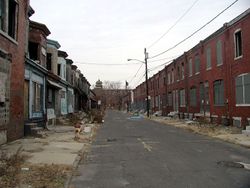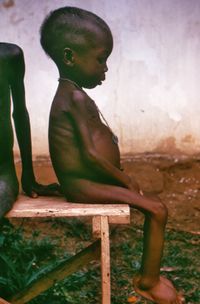طبقة اجتماعية
| علم الاجتماع |
|---|
| بوابة |
| النظريات والتاريخ |
| مناهج البحث |
| الموضوعات والحقول الفرعية |
الطبقة Class هي مجموع الأشخاص الذين يؤدّون عملاً واحداً، أو الذين تجمعهم مصالح واحدة، أو الذين يشتركون في وضع واحد أو حالة واحدة، في مجتمع من المجتمعات، كطبقة العمال، وطبقة التجار، وطبقة الصناعيين إلخ. كانت المجتمعات القديمة، حتى عهد الثورة الفرنسية، تتألف في الأعمّ الأغلب من ثلاث طبقات كبرى هي طبقة النبلاء ورجال الإقطاع، وطبقة رجال الدين، وطبقة الشعب أو طبقة العوام. وكانت السلطة متركّزة في أيدي ممثلي الطبقتين الأُوليَيَن. وقد برزت في كثير من المجتمعات، إلى جانب هاتين الطبقتين المتمتّعتين بامتيازات خاصة، طبقة ثالثة هي طبقة المحاربين. وبعد الثورة الصناعية برزت إلى الوجود طبقتان أصبحتا محور التجاذب الاجتماعي: طبقة الرأسماليين أو أصحاب المصانع، وطبقة الكادحين أو عمال المصانع. واليوم يميل العلماء إلى التمييز بين طبقات اجتماعية متعددة، كطبقة البروليتاريا Proletariat أي طبقة العمال الصناعيين، وطبقة العمال الزراعيين، والطبقة البورجوازية bourgeoisie أو الطبقة الوسطى، وطبقة المثقفين، وطبقة الجند، وطبقة الرأسماليين، وطبقة الإقطاعيين. وقد تلتقي هذه الطبقات كلَّها في مجتمع واحد وقد يخلوا من بعضها مجتمع دون مجتمع. وقد ظهرت في الفترة الأخيرة، في بعض البلدان الصناعية المتقدمة، وبخاصة الولايات المتحدة الأميركية، طبقة جديدة لم تكن من قبل هي طبقة المديرين والمنظّمين الذين ينهضون بأعباء المشروعات الاقتصادية الكبرى من غير أن يكونوا بالضرورة مالكين لأدوات الإنتاج. وقد بلغت هذه الطبقة الجديدة من القوة حدَّاً مكَّنها من أن تفرض نفوذها على قطاع عريض من الحياة السياسية والاقتصادية في مجتمعها.
التاريخ

الماركسية
Vladimir Lenin, A Great Beginning - June, 1919
الڤبرية
المسح الكبير للطبقات البريطانية
الطبقة العليا

الطبقة الوسطى
الطبقة السفلى

الطبقات في أمريكا
عواقب الوضع الطبقي
التعليم
الصحة والتغذية

التوظيف
صراع الطبقات
 مقالة مفصلة: صراع الطبقات
مقالة مفصلة: صراع الطبقات
المجتمع عديم الطبقات
 مقالة مفصلة: المجتمع عديم الطبقات
مقالة مفصلة: المجتمع عديم الطبقات
Relationship between ethnicity and class
نظام الطبقات
الطبقية أو ما يقصد بها تقسيم المجتمع إلى طبقات على حسب المستوى الاقتصادى وفى العادة يقسم المجتمع إلى ثلاث طبقات اقتصادية
- الطبقة الغنية / وهى تمتاز بالغنى وبمستوى ممتاز من التعليم والصحة والثقافة والسلطة وتعتبر ارقى طبقات المجتمع .
- الطبقة المتوسطة / وهى طبقة تمتلك كم محدود من الاموال تمكنها من أن يقع افرادها بين مستويات معتدله من التعليم والخدمات الصحية والثقافية وتعتبر اختفائها علامة غير صحية في الدولة .
- الطبقة العاملة / وهى افقر طبقات المجتمع وهى تمثل العمال والكادحين في المجتمع وتتمتع تلك الطبقة مستويات متدنيه للغاية في التعليم والصحة واذا لم يتم دعمها من قبل الدولة يصبح افرادها كالقنبلة الموقوته .
يمتاز المجتمع الطبقى / بعدم قدرة افراده على الخروج من الطبقات التي وجدوا فيها . يذكر ان الامبرالية ومنهجها الرسمالية تدعم نظام طبقية المجتمع ؛ بينما تحاول الشيوعية ومنهجها الاشتراكية تفتيت النظام الطبقى للمجتمع.
انظر أيضا
- رتبة اجتماعية
- تكتل الأغنياء
- صراع الطبقات الاجتماعية
- Caste
- Character class
- Chattering classes
- Classless society
- Drift Hypothesis
- Elite theory
- Elitism
- Gilbert Model
- Health and Social Class
- Mass society
- National Statistics Socio-economic Classification (NS-SEC)
- Passing
- Ranked society
- Raznochinets
- Second-class citizen
- Social exclusion
- Social mobility
- Social position
الطبقات حسب المنطقة أو الفترة التاريخية
- Class in Aztec society
- Class in the contemporary United States
- Four divisions of society
- Inca society
- Indian caste system
- Korean ruling class
- Social class in Cambodia
- Social class in ancient Rome
- Social structure of Britain
- Social class in Italy
- Social structure of China
- Social class in New Zealand
- Poverty in the United States
- Social class in American history
- Social structure of the United States
الهامش
للاستزادة
- Archer, Louise et al. Higher Education and Social Class: Issues of Exclusion and Inclusion (RoutledgeFalmer, 2003) (ISBN 0-4152-7644-6)
- Aronowitz, Stanley, How Class Works: Power and Social Movement, Yale University Press, 2003. ISBN 0-300-10504-5
- Barbrook, Richard (2006). The Class of the New (paperback ed.). London: OpenMute. ISBN 0-9550664-7-6.
- Beckert, Sven, and Julia B. Rosenbaum, eds. The American Bourgeoisie: Distinction and Identity in the Nineteenth Century (Palgrave Macmillan; 2011) 284 pages; Scholarly studies on the habits, manners, networks, institutions, and public roles of the American middle class with a focus on cities in the North.
- Benschop, Albert. Classes - Transformational Class Analysis (Amsterdam: Spinhuis; 1993/2012).
- Bertaux, Daniel & Thomson, Paul; Pathways to Social Class: A Qualitative Approach to Social Mobility (Clarendon Press, 1997)
- Bisson, Thomas N.; Cultures of Power: Lordship, Status, and Process in Twelfth-Century Europe (University of Pennsylvania Press, 1995)
- Blackledge, Paul (2011). "Why workers can change the world". Socialist Review 364. London - A useful analysis of class generally and nature of working class more specifically.
{{cite news}}: Italic or bold markup not allowed in:|journal=(help) - Blau, Peter & Duncan Otis D.; The American Occupational Structure (1967) classic study of structure and mobility
- Brady, David "Rethinking the Sociological Measurement of Poverty" Social Forces Vol. 81 No.3, (March 2003), pp. 715–751 (abstract online in Project Muse).
- Broom, Leonard & Jones, F. Lancaster; Opportunity and Attainment in Australia (1977)
- Cohen, Lizabeth; Consumer's Republic, (Knopf, 2003) (ISBN 0-375-40750-2). (Historical analysis of the working out of class in the United States).
- de Ste. Croix, Geoffrey (يوليو–أغسطس 1984). "Class in Marx's conception of history, ancient and modern". New Left Review. New Left Review. I (146): 94–111.
{{cite journal}}: Invalid|ref=harv(help)CS1 maint: postscript (link) (Good study of Marx's concept.) - Dargin, Justin The Birth of Russia's Energy Class, Asia Times (2007) (good study of contemporary class formation in Russia, post communism)
- Day, Gary; Class, (Routledge, 2001) (ISBN 0-415-18222-0)
- Domhoff, G. William, Who Rules America? Power, Politics, and Social Change, Englewood Cliffs, N.J. : Prentice-Hall, 1967. (Prof. Domhoff's companion site to the book at the University of California, Santa Cruz)
- Eichar, Douglas M.; Occupation and Class Consciousness in America (Greenwood Press, 1989)
- Fantasia, Rick; Levine, Rhonda F.; McNall, Scott G., eds.; Bringing Class Back in Contemporary and Historical Perspectives (Westview Press, 1991)
- Featherman, David L. & Hauser Robert M.; Opportunity and Change (1978).
- Fotopoulos, Takis, Class Divisions Today: The Inclusive Democracy approach, Democracy & Nature, Vol. 6, No. 2, (July 2000)
- Fussell, Paul; Class (a painfully accurate guide through the American status system), (1983) (ISBN 0-345-31816-1)
- Giddens, Anthony; The Class Structure of the Advanced Societies, (London: Hutchinson, 1981).
- Giddens, Anthony & Mackenzie, Gavin (Eds.), Social Class and the Division of Labour. Essays in Honour of Ilya Neustadt (Cambridge: Cambridge University Press, 1982).
- Goldthorpe, John H. & Erikson Robert; The Constant Flux: A Study of Class Mobility in Industrial Society (1992)
- Grusky, David B. ed.; Social Stratification: Class, Race, and Gender in Sociological Perspective (2001) scholarly articles
- Hazelrigg, Lawrence E. & Lopreato, Joseph; Class, Conflict, and Mobility: Theories and Studies of Class Structure (1972).
- Hymowitz, Kay; Marriage and Caste in America: Separate and Unequal Families in a Post-Marital Age (2006) ISBN 1-56663-709-0
- Kaeble, Helmut; Social Mobility in the Nineteenth and Twentieth Centuries: Europe and America in Comparative Perspective (1985)
- Jens Hoff, "The Concept of Class and Public Employees". Acta Sociologica, vol. 28, no. 3, July 1985, pp. 207–226.
- Mahalingam, Ramaswami; "Essentialism, Culture, and Power: Representations of Social Class" Journal of Social Issues, Vol. 59, (2003), pp. 733+ on India
- Mahony, Pat & Zmroczek, Christine; Class Matters: 'Working-Class' Women's Perspectives on Social Class (Taylor & Francis, 1997)
- Manza, Jeff & Brooks, Clem; Social Cleavages and Political Change: Voter Alignments and U.S. Party Coalitions (Oxford University Press, 1999).
- Manza, Jeff; "Political Sociological Models of the U.S. New Deal" Annual Review of Sociology, (2000) pp. 297+
- Manza, Jeff; Hout, Michael; Clem, Brooks (1995). "Class Voting in Capitalist Democracies since World War II: Dealignment, Realignment, or Trendless Fluctuation?". Annual Review of Sociology. 21.
- Marmot, Michael; The Status Syndrome: How Social Standing Affects Our Health and Longevity (2004)
- Marx, Karl & Engels, Frederick; The Communist Manifesto, (1848). (The key statement of class conflict as the driver of historical change).
- Merriman, John M.; Consciousness and Class Experience in Nineteenth-Century Europe (Holmes & Meier Publishers, 1979)
- Ostrander, Susan A.; Women of the Upper Class (Temple University Press, 1984).
- Owensby, Brian P.; Intimate Ironies: Modernity and the Making of Middle-Class Lives in Brazil (Stanford University, 1999).
- Pakulski, Jan & Waters, Malcolm; The Death of Class (Sage, 1996). (rejection of the relevance of class for modern societies)
- Payne, Geoff; The Social Mobility of Women: Beyond Male Mobility Models (1990)
- Savage, Mike; Class Analysis and Social Transformation (London: Open University Press, 2000).
- Stahl, Garth; "Identity, Neoliberalism and Aspiration: Educating White Working-Class Boys" (London, Routledge, 2015).
- Sennett, Richard & Cobb, Jonathan; The Hidden Injuries of Class, (Vintage, 1972) (classic study of the subjective experience of class).
- Siegelbaum, Lewis H. & Suny, Ronald; eds.; Making Workers Soviet: Power, Class, and Identity. (Cornell University Press, 1994). Russia 1870-1940
- Wlkowitz, Daniel J.; Working with Class: Social Workers and the Politics of Middle-Class Identity (University of North Carolina Press, 1999).
- Weber, Max. "Class, Status and Party", in e.g. Gerth, Hans and C. Wright Mills, From Max Weber: Essays in Sociology, (Oxford University Press, 1958). (Weber's key statement of the multiple nature of stratification).
- Weinburg, Mark; "The Social Analysis of Three Early 19th century French liberals: Say, Comte, and Dunoyer", Journal of Libertarian Studies, Vol. 2, No. 1, pp. 45–63, (1978).
- Wood, Ellen Meiksins; The Retreat from Class: A New 'True' Socialism, (Schocken Books, 1986) (ISBN 0-8052-7280-1) and (Verso Classics, January 1999) reprint with new introduction (ISBN 1-8598-4270-4).
- Wood, Ellen Meiksins; "Labor, the State, and Class Struggle", Monthly Review, Vol. 49, No. 3, (1997).
- Wouters, Cas.; "The Integration of Social Classes." Journal of Social History. Volume 29, Issue 1, (1995). pp 107+. (on social manners)
- Wright, Erik Olin; The Debate on Classes (Verso, 1990). (neo-Marxist)
- Wright, Erik Olin; Class Counts: Comparative Studies in Class Analysis (Cambridge University Press, 1997)
- Wright, Erik Olin ed. Approaches to Class Analysis (2005). (scholarly articles)
- Zmroczek, Christine & Mahony, Pat (Eds.), Women and Social Class: International Feminist Perspectives. (London: UCL Press 1999)
وصلات خارجية
- Domhoff, G. William, "The Class Domination Theory of Power", University of California, Santa Cruz
خطأ لوا في وحدة:Authority_control على السطر 278: attempt to call field '_showMessage' (a nil value).

